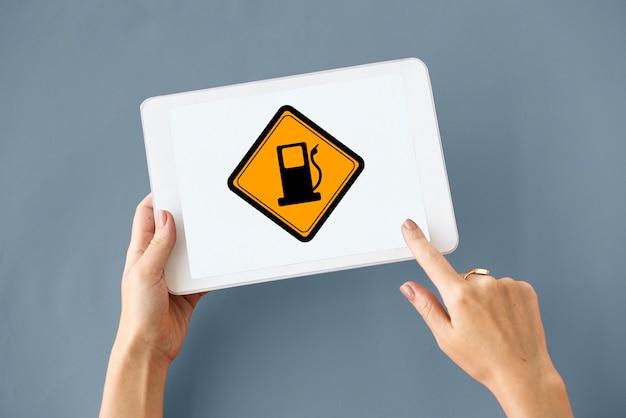When it comes to building or renovating our homes, one crucial aspect that should never be overlooked is fire safety. Understanding what materials are considered non-combustible and how they can be used in constructing walls is essential for ensuring the well-being of your household. In this blog post, we will delve into the world of non-combustible walls, exploring various materials and their fire ratings, as well as practical tips for creating a safe and durable barrier. So, whether you’re curious about the fire resistance of certain substances, like Durock cement board, or the recommended clearance between a stove and a wall, stay tuned for an informative read!
To help you navigate through this topic, we have compiled a list of frequently asked questions regarding non-combustible walls and provided concise answers to satisfy your curiosity. So, let’s dive in and uncover the key information you need to know about non-combustible walls and their importance in ensuring a safe living environment.
What Are the Examples of Non-Combustible Substances
What is Considered a Non-Combustible Wall
Non-combustible walls are an essential feature in building safety, especially when it comes to protecting structures from fire hazards. But what exactly does it mean when we say a wall is non-combustible?
Understanding the Basics
To put it simply, a non-combustible wall refers to a wall that doesn’t catch fire or contribute to the spread of flames. These walls are made from materials that have been tested and certified to have a high resistance to fire. They play a crucial role in containing fires within a specific area, giving occupants valuable time to evacuate and preventing the fire from spreading to other parts of the building.
Building Codes and Regulations
Non-combustible walls are not just a matter of preference; they are regulated by building codes to ensure public safety. In the United States, the International Building Code (IBC) sets the standard for construction requirements, including the definition and specifications of non-combustible materials. These codes are regularly updated to incorporate new research and developments, making sure that buildings keep up with the latest fire safety standards.
Materials that Make the Cut
Several materials are considered non-combustible, each with its advantages and purposes. Concrete, for example, is a popular choice due to its exceptional fire resistance and durability. Steel is also widely used, not only for its strength but also for its ability to withstand high temperatures without compromising the integrity of the structure.
Other commonly used non-combustible materials include gypsum, brick, and stone. These materials offer a combination of fire resistance, sound insulation, and aesthetic appeal, making them suitable for various applications in both residential and commercial buildings.
The Benefits of Non-Combustible Walls
Aside from the obvious advantage of enhanced fire safety, non-combustible walls offer several other benefits. They are known for their durability, which means they can withstand wear and tear over time, reducing maintenance costs. Additionally, these walls provide excellent sound insulation, ensuring privacy and a tranquil indoor environment.
Moreover, using non-combustible materials can have a positive impact on insurance premiums. Insurance companies often offer lower rates to buildings with adequate fire safety measures in place, and non-combustible walls certainly contribute to that.
Wrapping it Up
When it comes to fire safety in buildings, non-combustible walls are an indispensable feature. They not only prevent the spread of flames but also offer durability, sound insulation, and potential insurance benefits. So, whether you’re designing a new structure or renovating an existing one, it’s essential to consider non-combustible walls to ensure the safety and well-being of occupants. Remember, fire safety is no joke, so let’s keep those walls non-combustible and keep flames at bay.
FAQ: What Is Considered a Non-Combustible Wall
Welcome to our comprehensive FAQ guide on non-combustible walls. In this subsection, we’ll dive into the most commonly asked questions about non-combustible walls, materials, and safety considerations. So let’s get started!
What are some examples of non-combustible substances
Examples of non-combustible substances include brick, concrete, stone, cement, metal, and certain types of cement boards. These materials have a high resistance to fire and do not contribute to the spread of flames.
Is Durock cement board non-combustible
Yes, Durock cement board is considered non-combustible. Its composition includes cement and reinforced fiberglass mesh, making it highly resistant to fire.
What is the fire rating of a brick veneer wall
Brick veneer walls typically have a fire rating of one hour or more. The thickness of the brick and the type of insulation used between the brick and the structural wall play a significant role in determining the fire rating.
How do you fill a gap between a wall and a stove
To fill the gap between a wall and a stove, you can use heat-resistant silicone caulk. Apply the caulk along the edges of the stove where it meets the wall, ensuring a tight seal to prevent any gaps that could potentially allow heat or flammable materials to pass through.
Is all drywall fire-resistant
Not all drywall is fire-resistant. Standard drywall, also known as gypsum board or sheetrock, is not fire-resistant. However, there are specific types of drywall, such as Type X or Type C, that are designed to offer increased fire resistance.
Is Class 1 or Class 0 better
Class 0 is generally considered better than Class 1 in terms of fire safety. Class 0 materials have a higher resistance to fire spread and produce less heat during combustion. It’s important to consult with local building codes and regulations to determine the required class for your particular project.
Is cement board considered non-combustible
Yes, cement board is considered a non-combustible material. Made from a combination of cement and fibers, cement board offers excellent fire resistance and is commonly used as an underlayment for tile installations and as a backing for walls in high-moisture areas.
What should I put on the wall behind my wood burner
To protect the wall behind a wood burner, you can use materials such as heat-resistant wall panels, ceramic tiles, or metal sheets. These materials act as a heat shield and help prevent the transfer of excessive heat to the wall surface.
Does Durock require a vapor barrier
Durock cement board does not require a separate vapor barrier when used in wet areas, as it is already moisture-resistant. However, it is essential to follow the manufacturer’s guidelines and local building codes to ensure proper installation and moisture management.
At what temperature will drywall ignite
Standard drywall can start to ignite or deform at temperatures above approximately 450°F (232°C). However, it’s crucial to note that this temperature can vary depending on the specific type of drywall and its thickness.
What is the wall behind a wood stove called
The wall behind a wood stove is typically referred to as the heat shield wall. This wall is specifically designed to protect combustible materials from the intense heat generated by the wood stove.
Can cement board be left exposed
Yes, cement board can be left exposed in certain applications. However, it’s essential to consider the specific requirements of the project, including the aesthetic preferences and any applicable building codes or regulations.
Is a brick wall considered combustible
No, a brick wall is not considered combustible. Bricks are made from fired clay or a combination of clay and concrete, making them highly resistant to fire and non-combustible.
How much space do you need behind a stove
The amount of space required behind a stove depends on the specific appliance and local building codes. As a general guideline, it is recommended to have a minimum of 12 inches of clearance between the back of the stove and any combustible materials.
What should go behind a stove
A heat-resistant backsplash or wall covering is typically recommended behind a stove. Materials such as stainless steel, ceramic tiles, or specialized heat-resistant panels can provide the necessary protection against heat and potential fire hazards.
What can I use as a heat shield
Some common materials used as heat shields include ceramic tiles, metal sheets, specialized heat-resistant panels, and refractory bricks. These materials create a barrier between the heat source and combustible surfaces, minimizing the risk of fire.
Is Class 0 non-combustible
No, Class 0 is not considered non-combustible. Class 0 refers to a classification for materials with limited flame spread and low fire propagation index. Non-combustible materials are those that do not contribute to the spread of flames.
How close can a stove be to a wall
The distance required between a stove and a wall varies depending on the stove type and local building codes. However, as a general rule of thumb, a minimum distance of 36 inches is often recommended to ensure proper airflow and reduce the risk of accidental ignition.
What class are non-combustible materials
Non-combustible materials typically fall under Class A classification, which indicates the highest level of fire resistance. Class A materials have excellent flame resistance and result in minimal smoke generation in case of fire.
Can you put drywall behind a wood stove
Standard drywall is not recommended directly behind a wood stove due to its limited fire resistance. Instead, it is advisable to use heat-resistant materials, such as heat shields or non-combustible backer boards, to provide adequate protection against the stove’s heat.
Is drywall considered non-combustible
No, drywall is not considered non-combustible. While there are fire-resistant types of drywall available, standard drywall is not designed to provide significant fire protection on its own. It is crucial to use the appropriate fire-rated materials in areas where fire resistance is required.
What is a non-combustible material
A non-combustible material is one that does not ignite, burn, or contribute to the spread of flames when exposed to fire or high temperatures. These materials have high fire resistance and are essential for ensuring the safety of buildings and occupants.
What is the material between bricks called
The material between bricks is called mortar. Mortar is a mixture of cement, sand, and water that acts as a binding agent, holding the bricks together and providing structural stability to the wall.
How fire-resistant is cement board
Cement board is highly fire-resistant due to its composition of cement and reinforced fibers. It can withstand high temperatures and is commonly used as a fire-resistant backing material for walls, floors, and ceilings.
That concludes our FAQ section on non-combustible walls. We hope these questions and answers have provided you with valuable insights and guidance. If you have any further inquiries or concerns, don’t hesitate to reach out to us. Stay safe and keep your walls fire-resistant!
*[SEO]: Search Engine Optimization

